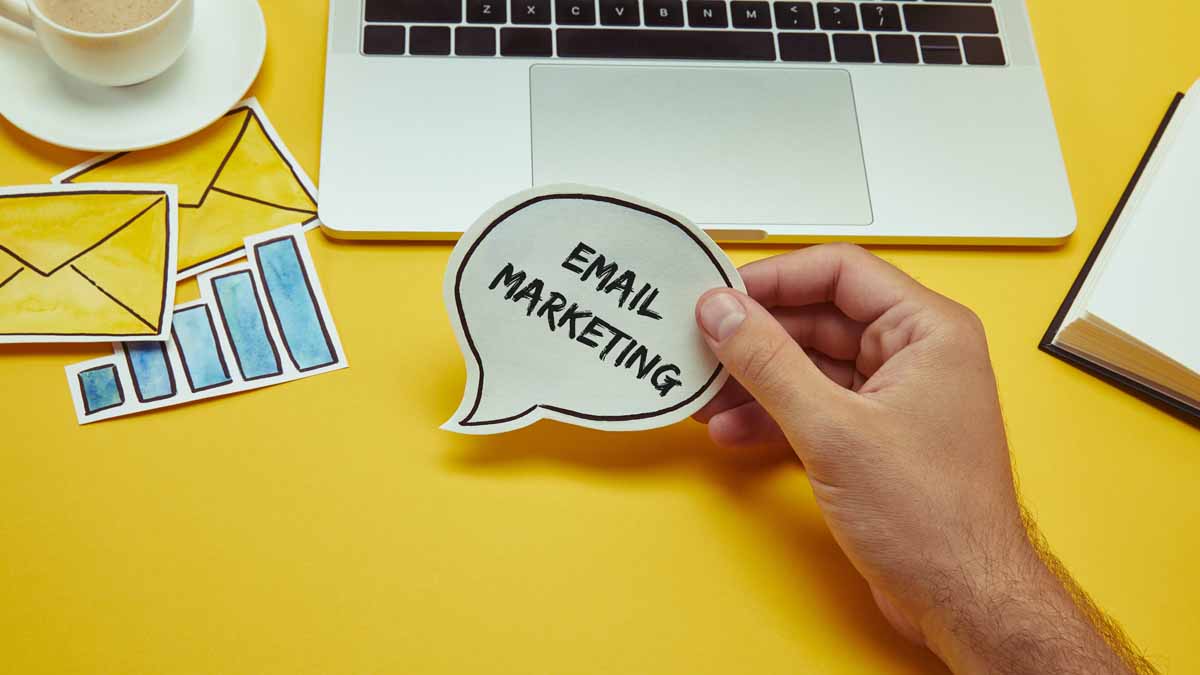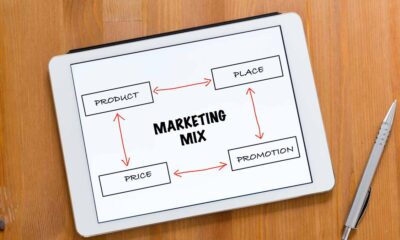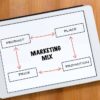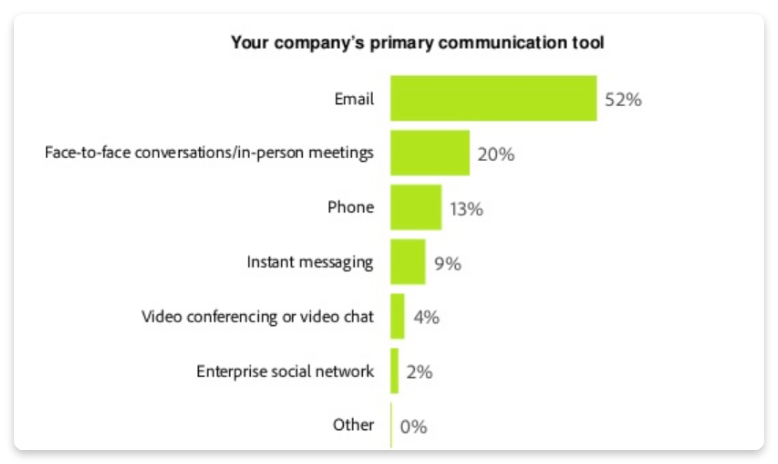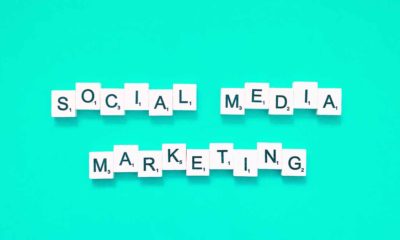Industry
The Beginner’s Guide To Email Marketing
Email marketing is the practice of maintaining and building a book of business through targeted and effective email messages. Strong email marketing programs avoid the scattergun approach. Instead, they carefully parse email lists to ensure recipients receive messages tailored to their needs. Email marketing campaigns are about connecting with the audience.
The first step in creating an email marketing program is setting measurable goals. With a thorough understanding of the campaign’s purpose, it is possible to create messages with high resonance that speak directly to the target audience.
Getting Started With Email Marketing
Many businesses new to email marketing make the mistake of jumping into the process without first establishing clear, achievable, and measurable goals. Email marketing campaigns are only successful if they achieve the desired results. What are these? Sales? Website hits? Brand recognition?
The goals should be the determining factor in what type of campaign to create, who to target, the content, and how success is measured. When considering goals, it is important to remember that email should be an important part of every digital marketing plan because of its excellent track record at increasing conversions and creating brand loyalty.
A key part of establishing goals for email marketing is to coordinate them with the company’s overall marketing goals and key performance indicators. For example, is the company currently trying to create more sales leads or promote a certain product line? Is there an event that needs promotion?
Whatever your goals, email marketing offers one of the most powerful tools to reach the target audience. Also, email marketing messages can be tailored to meet a number of goals at the same time, so it is always worthwhile to consider what objectives can be met through the campaign.
Likely, the broad goal of any email marketing campaign comes down to engaging customers and driving revenue. To achieve this, it’s important to begin with the end in mind. When getting started, it’s important to understand what makes a high-quality campaign.
Email marketing success requires the following five principles that engage the audience members and compels them to act:
- Knowing the audience
- Keeping it short
- Avoiding lengthy paragraphs
- Consistency
- Using what works
Following these five principles allows your campaign to stand out from the crowd. As we all know, our inboxes are inundated with spam. The last thing you want is for your excellent marketing work to land in the junk folder and never be read.
By creating a campaign that resonates with your target audience, you provide a valuable service to them rather than another email they have little time to read. Competition for attention is stiff, so you need to differentiate your message.
[Read More] 6 Instagram Captions That Will Make Them Double-Tap
Know Your Audience
Demographic knowledge allows you to build a message that resonates with the target audience. Without this knowledge, email marketing campaigns can quickly turn into spam distributed with the scattergun approach. You end up just hoping if you send enough emails, you are bound to get lucky. Often, your luck remains terrible and few, if any, potential customers give your message the attention it deserves.
Knowing the audience makes it possible to understand what messages interest them. Not understanding the target market wastes money. For example, offering a discount to those who have no interest in the product of service creates a wasted email campaign.
So how do you get to know your audience?
One option is to create a sort of marketing mousetrap.
For example, social media and website analytics can be enlightening. To gain social media insights, try clicking on the “insights” button of your business’s Facebook page. Also, the “people” button provides basic demographic information, such as age, gender, and location.
Your website provider also offers analytical information that provides demographic clues. Google Analytics also provides demographic information, which can serve to identify previously unknown trends and confirm some of the conclusions drawn from other sources.
It also helps to look for creative sources of data. For instance, eCommerce store owners can review information from abandoned carts, wish lists, and locations to learn more about the target audience.
Short and Sweet Wins Attention
The digital age offers us many conveniences, but it also results in a bombardment of marketing messages. As a result, people have little time to invest in each message they receive, especially when it comes to email marketing. By being short and sweet, you encourage your target audience to engage, albeit for a short time, with your material.
The subject line is very important. It needs to impel the audience members to open the email. They should know, by reading a few short words, that this email contains important information that benefits them. For example, an auto service center might target previous customers who are coming due for an oil change with the subject line: $15 oil change in 15 minutes.
For this target audience, a short message about saving money and time on their next oil change is worth reading.
Avoid Lengthy Paragraphs
When you pick up classic literature, you might be confronted by long paragraphs, but the digital age has changed paragraphing style. Now that we read on a screen, long paragraphs are much less attractive. They appear as a “wall of text” on the screen and lead to disengagement. Long paragraphs just look different on the screen than on the page.
In addition, with people pressed for time, they need to be able to skim through messages to determine if they apply to them. Short paragraphs allow for easy skimming, which increases the chances of the message being read and understood.
Short paragraphs that get to the point are most effective. In addition, headers help break up the text and allow readers to focus on the segments that are most important to them. Also, including topic sentences at the start of paragraphs helps readers identify which parts of the message they want to invest their time in reading.
The goal of email marketing is to get readers’ attention and inspire them to act in a way that enhances revenue for the company. Email campaigns are meant to be read quickly, not win the Pulitzer Prize for literature. Keep paragraphs short and sweet.
Consistency
Marketing campaigns take time to work. The first, second, and even third email may produce few results. But by consistently putting your business’s name in front of customers, they get to know you and what you have to offer. In time, if you have the right target audience, you will see the results.
For example, a monthly newsletter is a great way to build consistency. When the newsletter provides timely information that pertains to your target audience, readers come to expect the newsletter and rely on it for important data. By establishing your company as a trusted source, you ensure that clients will seek you out when they have a need for your products or services.
Use What Works
Tracking the campaign’s effectiveness allows you to understand what works and what does not. For instance, it’s important to know what subject lines garner the highest open rates and what body content results in the most clicks. As you track the results, the most effective methods will become clear. Once you identify what works, use it.
Growing Your Email List
To achieve your email marketing goals, you need an email list full of the best prospects.
How can you build a winning list? Start with your known contacts.
Import a List of Known Contacts
For email campaigns targeted to existing customers, importing a list of known contacts will do the trick. Even if you plan to expand beyond your customer base, known contacts are a great way to start.
Build a New List from Scratch
Building a new list starts with email address capture. For those new to email marketing, this can seem like a daunting task. Luckily, there is a 2-part formula that simplified this process:
A Valuable Incentive + Simple Subscribe Opportunities = Large Email List
This formula follows the vein of doing what works. Email marketers have long known that no matter how many subscribe opportunities they dangle in front of website visitors, few will follow through without an incentive. When you pair an easy process to subscribe with a valuable incentive, your email list grows and grows.
So, how do you design an effective incentive and make the subscription process painless? Here are some helpful hints on creating incentives that get results:
Compelling Content
If you have valuable information to share, interested parties will want to sign up to receive emails when you post a new blog or enter additional content on your website. For example, many precious metals dealers do an excellent job of gaining subscriptions because they provide timely updates on the metals’ markets.
Through blogs, newsletters, and website content, they post daily analysis of gold and silver prices. For investors, this is relevant and valuable information. It’s literally worth money, and subscriptions pore in.
First-Order Discounts
For e-Commerce, first-order discounts are a goldmine. Not only does subscribing provide valuable information, but it also literally pays off immediately. Discounts encourage subscriptions and induce purchases, your primary goal.
Precious metals dealers also offer discount opportunities as part of their email marketing and content strategy. Frequently, clicking on one of their emails results in an update on the metals markets and a juicy discount offer.
Offering Free or Upgraded Shipping
Everyone hates shipping costs. It adds to the cost of products and increases the cost basis for investments like precious metals. Free shipping is a great incentive. Also, offering a free upgrade to expedited shipping is sure to motivate customers to subscribe.
Hint: Offering free or expedited shipping with a subscription during the e-Commerce checkout process is certain to net many subscriptions.
Of course, the simpler the subscription process, the more people will sign up. How you design the subscription will depend on the incentive offered, but here is an example of an effective call to action:
Header Bar
A header bar sits at the top of your website. It encourages people to subscribe by a simple process. All they need to do is click on it and input their email address. It takes seconds, and they get the incentive right away.
Choosing an Email Service Provider
Not all email service providers (ESPs) are created equal. Some are better for larger enterprises, others cater to small businesses. Some offer many customization options, while others provide simpler formats suited for large campaigns.
For most businesses, the ease of creating emails is a salient consideration, as is customization capabilities. It’s also important to consider social media integration.
Do you want to integrate with your social media platforms, and at what level? Combining marketing strategies across different channels, such as email + social media, helps increase message penetration. It also allows for responses from your customers, such as with like and share buttons. When considering an ESP, look into their social media integration abilities.
ESP companies also differ in the level of support they offer. Most provide basic tools along and a place to submit support tickets. If this is all the support you require, these ESPs may be the right choice.
However, additional services are available from some ESPs. This can be particularly important if choosing an ESP that offers complex email building and sending tools or if you are running an elaborate email campaign.
Email List Segmentation
Segmenting your email list is a key step. Segmentation is the process of dividing the list up according to various marketing categories. Different segments pertain to different demographics.
Creating these categories is essential because each group represents a target audience that responds in its own way to various messages. Crafting messages according to segmentation enhances results, and most ESPs provide the technology needed to create sophisticated marketing lists.
Some effective segmentation includes the following:
- Activity on Your Website
- Age Groups
- Purchase History
- Online Navigation History
- Birthday
- Click-Throughs
- Customer Persona
- Demographics
- Interests
- Job Industry
- Job Title
- Multiple Opt-Ins
- Open Rate
- Purchase Cycle
- Purchase History
- Stage in the Customer’s Journey
- Subscriber Preferences
- Survey Participation and Answers
- Type of Purchase
[Read More] What Is A Marketing Agency?
Improving Email Open Rates
Of course, open rates are a key metric. Without a high open-rate, an email campaign cannot be effective. Here are the key ways to ensure your emails get opened:
Keep Your List Fresh
Inactive subscribers clutter your email list. Occasionally, it’s important to purge those who are not engaged, such as those who have not opened an email in six months.
Avoid Spam Filters
Spam filters still pull messages that are far from being spammy. To prevent this from happening to your emails, ensure that all recipients have opted in. Also, never send email from an IP address that has previously been used for spam and send emails through verified domains. Using the merge tag to personalize the “To” field also helps. In addition, avoid salesy language, such as “buy” or “clearance” or “discount”, which will alert the spam filters.
Make Your Subject Line Stand Out
The subject line is always the top priority when it comes to open rates. It must stand out. Subject lines should strike readers’ curiosity. Also, inserting numbers tends to draw the eye. A fun, joking tone also increases open rates, as does using language in a way that is similar to the subscribers’ way of speaking.
Inject Some Humor
Humor is always appreciated, and it sticks in people’s memories. This does not require you to be a comedian. Rather, just interjecting some light humor will get people’s attention and make them more receptive to your message.
[Read More] What Is Digital Marketing?
Setting Up Automated Email Marketing
This may sound simple, and, for the most part, it is. You want emails to arrive in your subscribers’ inboxes at regular intervals or when certain events occur. Trigger emails are sent when a specific event occurs, such as welcome emails, abandoned cart emails or milestone emails.
On the other hand, drip-feed emails deliver messages based on a specific timeframe. Done well, they lead to increased revenue. They are most effective when designed in a sequential way that brings subscribers to the next stage of a sales funnel.
The Roundup
Email marketing can seem intimidating to the uninitiated. We are all used to receiving more marketing emails than we know what to do with, and this understandably causes anxiety for those new to email marketing. After all, how are you going to stand out in a sea of emails competing for your target audience’s attention?
Despite the competition, email marketing remains one of the most effective methods of promoting a business and increasing revenues. There is a reason email marketing is so popular.
To be successful, a marketing campaign needs to follow a well-conceived plan. This plan starts with establishing the goals of the campaign and applying email marketing best practices. With these fundamentals established, you are ready to create your email list, select the most appropriate ESP provider and design the emails that get opened at high rates.
Email marketing keeps you in touch with customers and provides a method of finding new ones with a high return on investment. With a well-defined plan, you can create an email marketing campaign that propels your company ahead of the competition.
Brett Heimann is a marketing & advertising professional with 10 years of experience. He's the founder of MarketingAgency.com and contributes to other publications such as; Entrepreneur, Thrive Global, and StockMarket.com. His passion for digital marketing began after graduating with a B.S.B.A in business administration and finance in 2013. After completing college, he went on to become an entrepreneur in the marketing and finance space. Brett loves the ability to deliver to his readers engaging and educational content that can be easily consumed by the reader. He enjoys writing about a wide variety of marketing topics such as; Search Engine Optimization (SEO), Paid Advertising (PPC), E-Commerce, and Lead Generation For SMBs to name a few. Brett, a South Florida native, enjoys spending time with his wife and two sons outdoors and is a big basketball and MMA fan.


